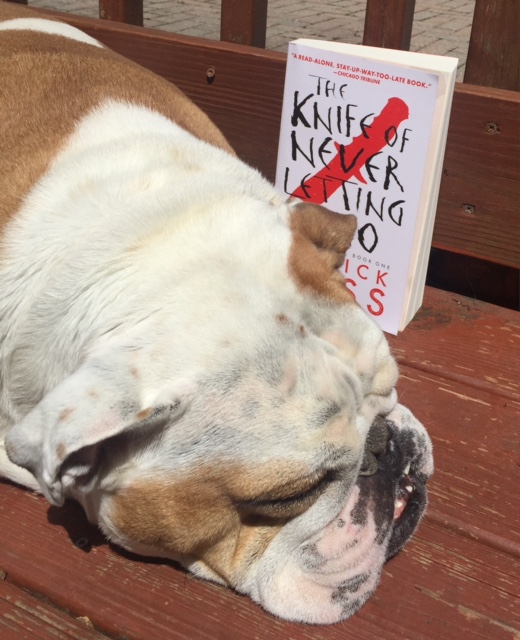Last month I attended my first red carpet event. It was 3:00 in the 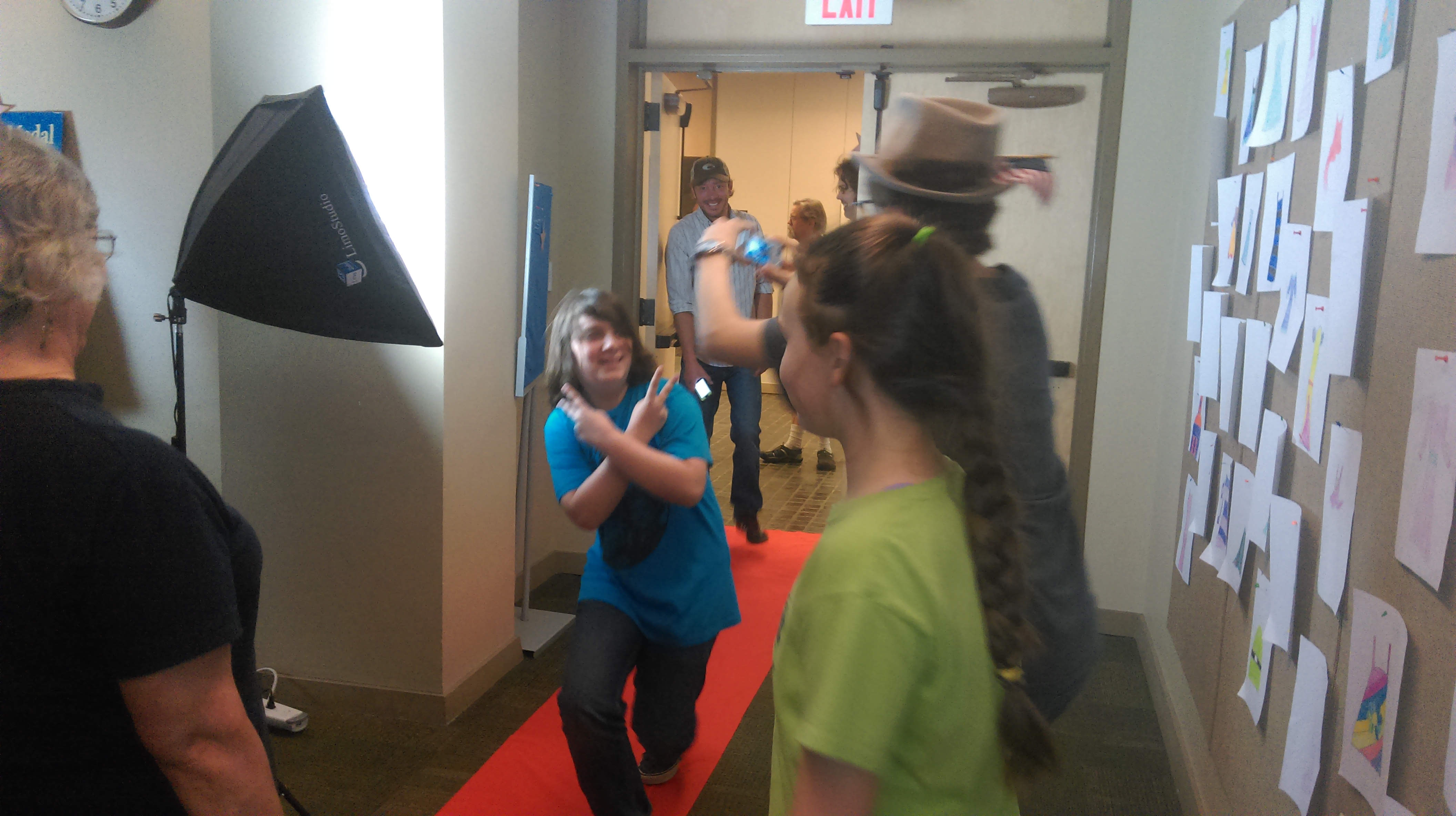 afternoon and the venue was the auditorium at the downtown branch of Asheville’s public library. The A-listers being feted were the kid filmmakers participating in the 90-Second Newbery Film Festival, which was having its Asheville debut.
afternoon and the venue was the auditorium at the downtown branch of Asheville’s public library. The A-listers being feted were the kid filmmakers participating in the 90-Second Newbery Film Festival, which was having its Asheville debut.
In my very first post for ShelfTalker back in January, I shared the experience of networking with other community organizations to bring a public screening of the film festival to Asheville for the first time. As promised, here are the results… Continue reading
Monthly Archives: May 2017
Minding the Gaps!
Meghan Dietsche Goel - May 12, 2017
It’s Reading Without Walls week at ShelfTalker! As my colleagues have been writing all week, we collectively decided to take Gene Luen Yang’s Reading Without Walls challenge and blog about it. I’m so glad we did because I am a huge fan of this 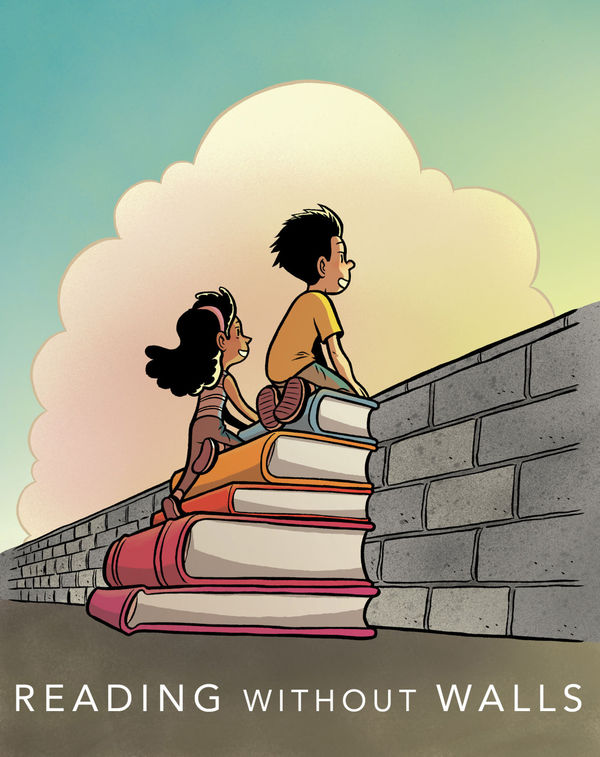 initiative. It provides a welcome push to hit pause and look past the books on our (always too long) must-read lists to try to see which ones aren’t there, and maybe ask ourselves why.
initiative. It provides a welcome push to hit pause and look past the books on our (always too long) must-read lists to try to see which ones aren’t there, and maybe ask ourselves why.
Like all booksellers, I try to be an omnivorous reader, with various books stashed in my purse, diaper bag, and glove compartment at any given time. While I love mixing up genres, themes, characters, and voices, I have reading gaps just like anyone else. I admit that I don’t read enough sports stories, and that romance-heavy novels aren’t always my first choice. But I ultimately decided to focus on the graphic novel. And that’s for very selfish reasons. Honestly, I really want to understand the world of graphic novels better than I do.
Continue reading
Of Mermaids and Purrmaids
Kenny Brechner - May 11, 2017
 As you may know this week all five of us ShelfTalkers have been writing about books we’ve read for Gene Luen Yang’s Reading Without Walls Challenge. Meghan had put forward the idea and we were all excited to read something on what would be, for us personally, a road even less traveled than the one at Frost’s intersection in the woods.
As you may know this week all five of us ShelfTalkers have been writing about books we’ve read for Gene Luen Yang’s Reading Without Walls Challenge. Meghan had put forward the idea and we were all excited to read something on what would be, for us personally, a road even less traveled than the one at Frost’s intersection in the woods.
The challenge asks us to read books with which we have at least one of the following relationships to.

 I was interested in reading books in an area that met all three criteria for me and which represented a true gap in my reading and settled upon a genre, early chapter books written specifically for girls, which was an undeniable personal weak point. I do have go-to books there like Dory Fantasmagory, The Princess in Black, and Utterly Me Clarice Bean, but these titles are singular and exceptional. The vast rank and file world ruled by mermaids, pet clubs, rainbow fairies, magical animals and princesses I have left unsampled.
I was interested in reading books in an area that met all three criteria for me and which represented a true gap in my reading and settled upon a genre, early chapter books written specifically for girls, which was an undeniable personal weak point. I do have go-to books there like Dory Fantasmagory, The Princess in Black, and Utterly Me Clarice Bean, but these titles are singular and exceptional. The vast rank and file world ruled by mermaids, pet clubs, rainbow fairies, magical animals and princesses I have left unsampled.
I chose two books for the challenge. The first was Purrmaids Book One, the Scaredy Cat, by Sudipta Bardhan-Quallen, and the second was Third Grade Mermaid by Peter Raymondo. These books clearly met all the challenge standards. As a mostly bald 55-year-old male I do not resemble either a young cat mermaid, or an eight-year-old mermaid, nor do I know much about either of their personal lives
Continue reading
Reading Without Walls Challenge, Part 3
Elizabeth Bluemle - May 10, 2017
 I love a good reading challenge! Several weeks ago, fellow ShelfTalker blogger Meghan Goel at BookPeople (in Austin) suggested that all five of us take on Gene Luen Yang’s Reading Without Walls Challenge and blog about it.
I love a good reading challenge! Several weeks ago, fellow ShelfTalker blogger Meghan Goel at BookPeople (in Austin) suggested that all five of us take on Gene Luen Yang’s Reading Without Walls Challenge and blog about it.
I loved the criteria Gene set out to encourage a nation of readers to read outside their comfort zones: to read about characters unlike you, to read about topics you don’t know about, and to read formats you don’t usually read. As a bookseller, it’s kind of my job to read outside my comfort zone; I have to read books across all genres and formats in order to stock the store for all of the readers who walk through the doors, not just readers who share my reading preferences. And as a human being, I’m a fairly curious beast, and open to the unfamiliar. So at first. I wasn’t sure where my areas of reading discomfort lay. But during our five-way email conversation, in which my colleagues identified their own zones of avoidance, I realized of COURSE there are books I avoid. But did they meet Gene Yang’s criteria?
Continue reading
Beam Me Up, Scotty
Cynthia Compton - May 9, 2017
My fellow ShelfTalker bloggers have been handselling of late — not just in their stores, but to each other. It began with a suggestion from Meghan Dietsche Goel to spend a week as a group with Gene Luen Yang’s Reading Without Walls challenge, and specifically to select a title that met one, two, or three of his criteria, read it and write about the experience. Great idea, Meghan, but “YIKES!” I thought. In my on-the-floor, apron-wearing mode, I happily recommend all types of books to young readers, and read stacks of ARCs and award list titles rather indiscriminately. It’s a rare luxury, as a bookseller, in just choosing what you like to read for fun, much less to pick up something not required.
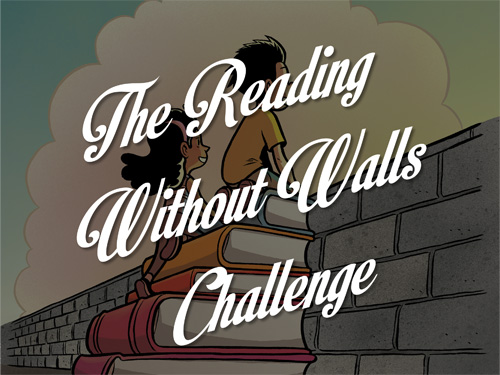
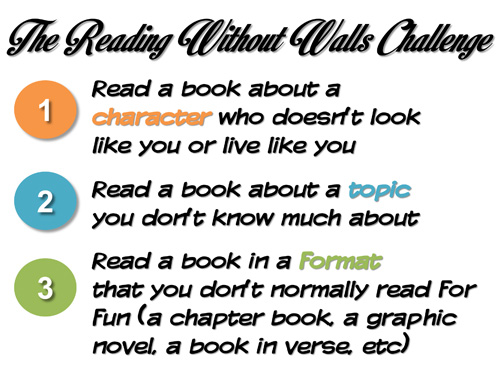
I imagine that many of our desks and nightstands and car floormats are piled with towering stacks of next season’s releases, this season’s “next up” before launch date, and the backlist offerings of our next visiting author. So much of this reading is just to put out the fire, so to speak – it’s what we MUST read next, to introduce, to review, or perhaps to hold our own at a dinner or panel. It’s often an embarrassment of both literary riches and a failure of housekeeping. It was a straightening of the spine, as my Nana would have said, to look at those shelves and think about what I should read to thoughtfully respond to Gene’s challenge: specifically to stretch by choosing something out of my ordinary in either format, character, or topic.
Fortunately, my colleagues had plenty of ideas for me, and confessions of their own about genres that were less regular in their reading rotations. (Note to self: stop asking potential new hires what they LIKE to read, rather, ask them what makes them uneasy… fascinating answers follow.) I shared my hesitance about the science fiction section, and was offered a GREAT BIG STACK of titles. Why is it, I wonder, that so much science fiction is so FAT? Does it really take that many pages to invent a new reality? I thought technology was supposed to save time? Never mind. I’m procrastinating. Into the shelves I went to pluck Book One of the Chaos Walking series from Patrick Ness, The Knife of Never Letting Go. Just in case, I took home books two and three, which effectively toppled the precarious stack next to the bed, and disturbed the sleeping bulldog.
I was familiar with the trilogy, and could recite a couple of good “hooks” from staffers for customers, but had never handsold the books with the passion of a first-hand reader. I had sold A Monster Calls by the stack, but that is such a stand alone novel that I never went back to read the author’s crossover debut. The Chaos Walking series has all the imagined foreboding qualities of science fiction that make me skip to the next title in the pile: the books are lonnnnggg, presented in a trilogy format (which can be like agreeing to a prom date before Valentine’s Day, as you just don’t know how you’ll feel by spring break) and an (imagined) introduction of detailed futuristic technology to set the story. I was wrong about that third assumption, as I was about many of my generalizations about the genre. The book launches from a perfect first sentence for a technophobic reader (“The first thing you find out when yer dog learns to talk is that dogs don’t got nothing much to say”) to the introduction of a society filled with the NOISE of every person’s thoughts. As I turned off my phone (must remember to silence that buzz announcing emails) and pushed the laptop over to my spouse’s side of the bed (no, I don’t want to watch the video with the duck and the dog best friends), I flew through the first 100 pages, completely connected to young Todd, and knee deep in the swamps around Prentisstown. I was alternately shocked, frightened, amused, and altogether riveted by a story that races along, and fulfills that “just one more chapter before I turn out the light” that moves a title from shelf talker status to emotional handsell.
While the novels are clearly science fiction, the story transcends genre in the best of ways, through heart-stopping, sleep-preventing adventure, cheer-worthy heroes and shocking evil hidden by societal norms. I find myself still haunted by themes of this trilogy, published in 2006, that seem all too 2017: the incessant noise of a constantly broadcast stream of consciousness masquerading as information, the ease of manipulation of a large group of people, the role of guilt in controlling behavior, and the struggle to come of age in a society with a distorted view of adulthood. Like many good books, this one will need rereading in different times both in our customers lives and experience, and as reflection on changing times in our politics and society. Ohhhh… I get it, Mr Yang. We must read the strange to see the familiar, and look inside the cover to see further what’s outside. Let’s take down a few more of those walls in our bookshelves, to start. Two to beam aboard.
Reading Without Walls (Part One)
lhawkins - May 8, 2017
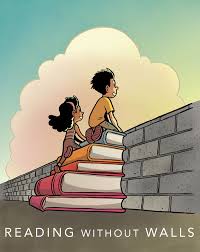
In April, National Ambassador for Young People’s Literature Gene Luen Yang formally launched the Reading Without Walls Challenge. Inspired by his official platform, the challenge encourages readers to explore books of diverse voices, genres, and formats. My ShelfTalker colleagues and I chatted about the initiative all through April and decided to take turns writing about some of our experiences. Looks like I’m up first! Continue reading
‘This Is Not The End’!
Kenny Brechner - May 4, 2017
 Turning the last page of Chandler Baker’s This Is Not The End I found myself wishing that were true. It’s a story you don’t want to leave. In the world of This Is Not The End, every citizen, on her 18th birthday, can apply to resurrect one, and only one, person. Resurrection not only restores a body to life but heals its physical defects in the process. With her best friend and her boyfriend dead in a car crash, her resurrection choice already spoken for within her broken family, and the days until her 18th birthday ticking away, Lake Devereaux is in a tight spot by any standard.
Turning the last page of Chandler Baker’s This Is Not The End I found myself wishing that were true. It’s a story you don’t want to leave. In the world of This Is Not The End, every citizen, on her 18th birthday, can apply to resurrect one, and only one, person. Resurrection not only restores a body to life but heals its physical defects in the process. With her best friend and her boyfriend dead in a car crash, her resurrection choice already spoken for within her broken family, and the days until her 18th birthday ticking away, Lake Devereaux is in a tight spot by any standard.
This Is Not The End uses the abundant drama of Lake’s predicament as a powerful fulcrum of self exploration and revelation. Chandler took the story in several directions I hadn’t foreseen, delivering a rich story that is both a taut thriller and a satisfying, multifaceted love story. As I see it, the book, which comes out in August from Hyperion, is not only terrific, but also exceptionally promising in the sales department. I asked its author to weigh in here on some spoiler-free topics from its pages.
Continue reading
13 Reasons Why We Read, and Why We Must Talk About It
Cynthia Compton - May 3, 2017
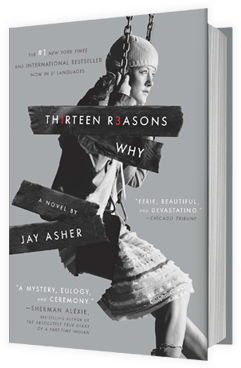 It’s a terrifying subject, teen suicide, and it’s in every newspaper this week. Our own state of Indiana ranks ninth in the country in adolescent suicide, according to the latest Kids Count report, and as high as in the top five of states for teens who have considered self harm. The release of the Netflix adaptation of Jay Asher’s novel 13 Reasons Why has created a storm of comment, controversy and concern from school administrators, counselors, parents and the media. Copies of the book, with its newer cover featuring the actors from the series, are selling more than other movie cover in recent memory or POS report. As booksellers, we are grilled by parents in the aisles: “have you read it? have you seen it? what do you think?” and kids who slide a copy across the counter, prompting this shopkeeper and mom to try to catch their eye and somehow discern in a glance whether they need a helping hand or just a bag and a bookmark.
It’s a terrifying subject, teen suicide, and it’s in every newspaper this week. Our own state of Indiana ranks ninth in the country in adolescent suicide, according to the latest Kids Count report, and as high as in the top five of states for teens who have considered self harm. The release of the Netflix adaptation of Jay Asher’s novel 13 Reasons Why has created a storm of comment, controversy and concern from school administrators, counselors, parents and the media. Copies of the book, with its newer cover featuring the actors from the series, are selling more than other movie cover in recent memory or POS report. As booksellers, we are grilled by parents in the aisles: “have you read it? have you seen it? what do you think?” and kids who slide a copy across the counter, prompting this shopkeeper and mom to try to catch their eye and somehow discern in a glance whether they need a helping hand or just a bag and a bookmark.
Continue reading
The Best Comfort Books
Elizabeth Bluemle - May 2, 2017
Books are magical, and bookstores are houses of magic. There’s something indescribably hopeful about being around all those stories and information on every conceivable interest or need—shelves and shelves of possibility jacketed in beautiful art. Familiar books are friends, while others are potential beloveds. Bookstores tend to be colorful, cheerful places, energetic but also soothing, restful, reassuring. I’ll bet my fellow booksellers can attest to the numbers of people who confide that they’ve come in for a little comfort after a hard week or a difficult loss. Sometimes these customers are seeking a book to help themselves or others through a painful time; at other times, they just want to soak up the warm papery goodness of being around so. many. books. Bookstores are like a literary bakery.
Because so many people look to bookstores for a little TLC, I’m always interested in discovering what others consider a comfort read. Here are a few of my own favorite books to revisit in times of trouble:
Continue reading

